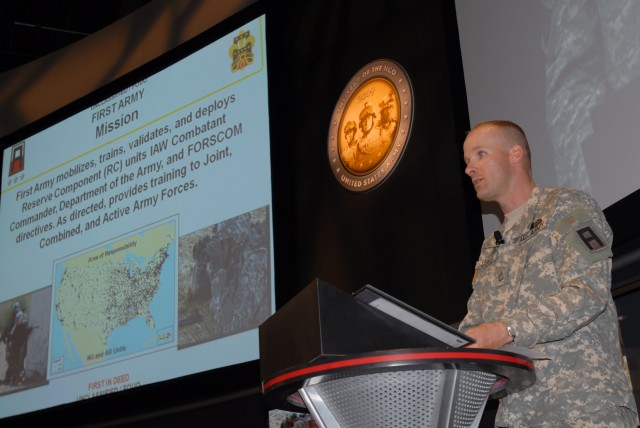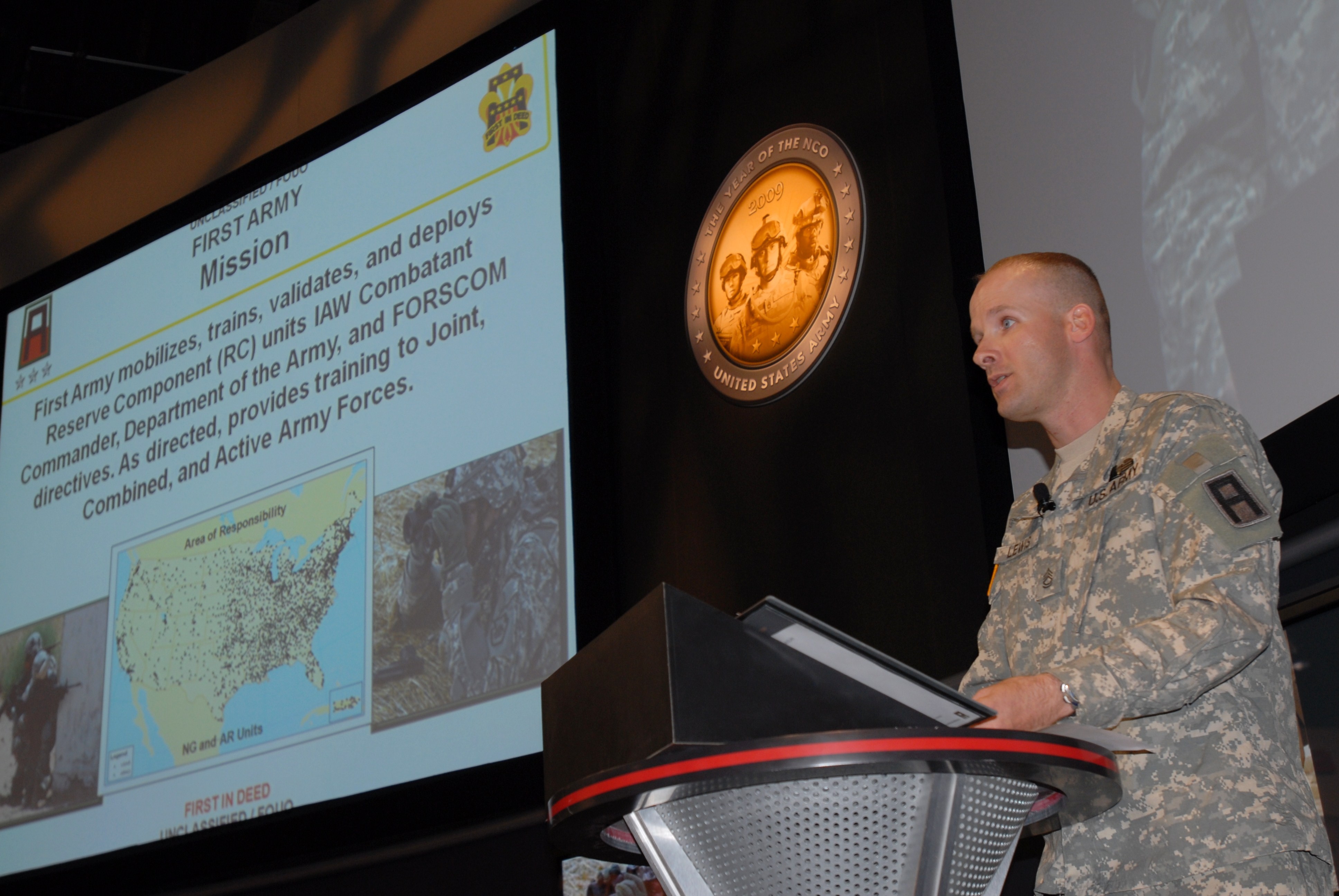
WASHINGTON, D.C. - As an executive agent of U.S. Army Forces Command, First Army plays a critical national defense role in mobilizing, validating and training Reserve and National Guard units slated for active duty assignments across a broad spectrum of operations.
That was the message delivered by Sgt. 1st Class John E. Lewis, a First Army observer-controller/trainer with the 177th Armored Brigade, First Army Division East, when he spoke at the "Sergeants Corner" exhibit to attendees of the annual Association of the U.S. Army (AUSA) National Meeting and Exposition here Oct. 5.
Once a unit has been identified, First Army initiates a joint assessment nine months to a year out from the unit\'s actual mobilization, during which commanders identify pre- and post-mobilization tasks and an enduring mobilization training center is selected. "This allows training to be fine-tuned to specific assigned mission sets and for training resources to be identified," said Lewis. "Once a solid training plan has been developed, a unit can begin individual and collective task training before its mobilization arrival."
Time actually spent at the mobilization training center is dedicated to bringing units up to date on current key tactics, techniques and procedures used in the theater. "This helps provide a smooth, seamless transition between forces during unit rotations," Lewis said.
First Army trains for all mission sets a combatant commander requires. The range of mission training sets includes security forces, detainee operations, aviation, agricultural and business development, medical, multi-national force observers and many more. First Army has trained more than 90,000 Soldiers this year alone. It keeps its training current and relevant by incorporating information collected by liaison officers in Iraq and Afghanistan with the lessons learned by Soldiers' recent combat experience through its Operation Warrior Trainer (www.first.army.mil/OWT).
In August this year, First Army instituted the IED (improvised explosive device) Master Trainer Academy. Covering 14 specific blocks of instruction, the academy's concentrated certification training is accomplished in 19 days, rather than the eight months to a year it has historically taken.
Headquartered at Fort Gillem, Ga., First Army consists of two divisions, First Army Division East at Fort Meade and First Army Division West at Fort Hood, plus 16 training brigades and 103 training battalions across the continental United States. Lewis said, "As is the case with most Active Component units, First Army is also transforming to meet the Chief of Staff of the Army's intent to synchronize mobilization throughout the entire Army."
That transformation for First Army consists of three main elements:
Aca,!Ac Designing a training support strategy that supports Reserve Component units as they build readiness in the Army Force Generation (ARFORGEN) cycle,
Aca,!Ac Consolidating units and resources at enduring mobilization training centers,
Aca,!Ac Restructuring training support brigades to more efficiently and effectively support the modular Army.

Social Sharing